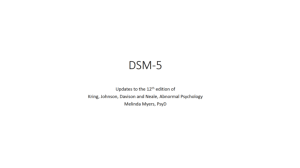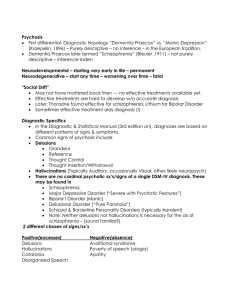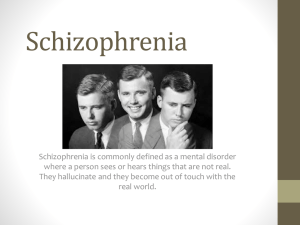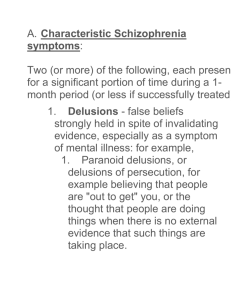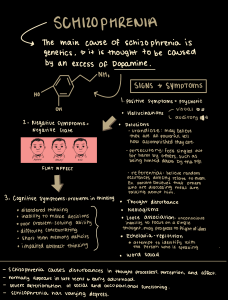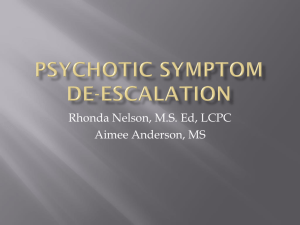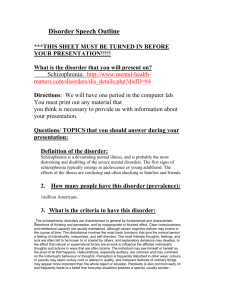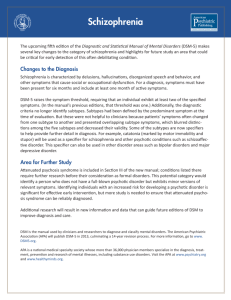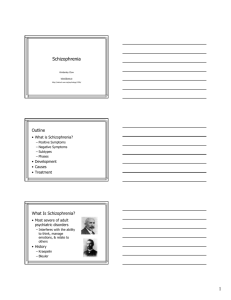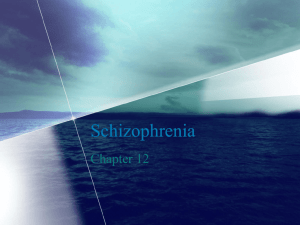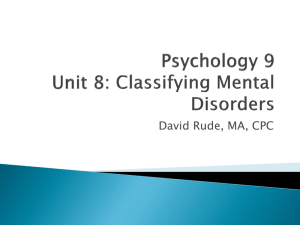Schizophrenia Outline
advertisement
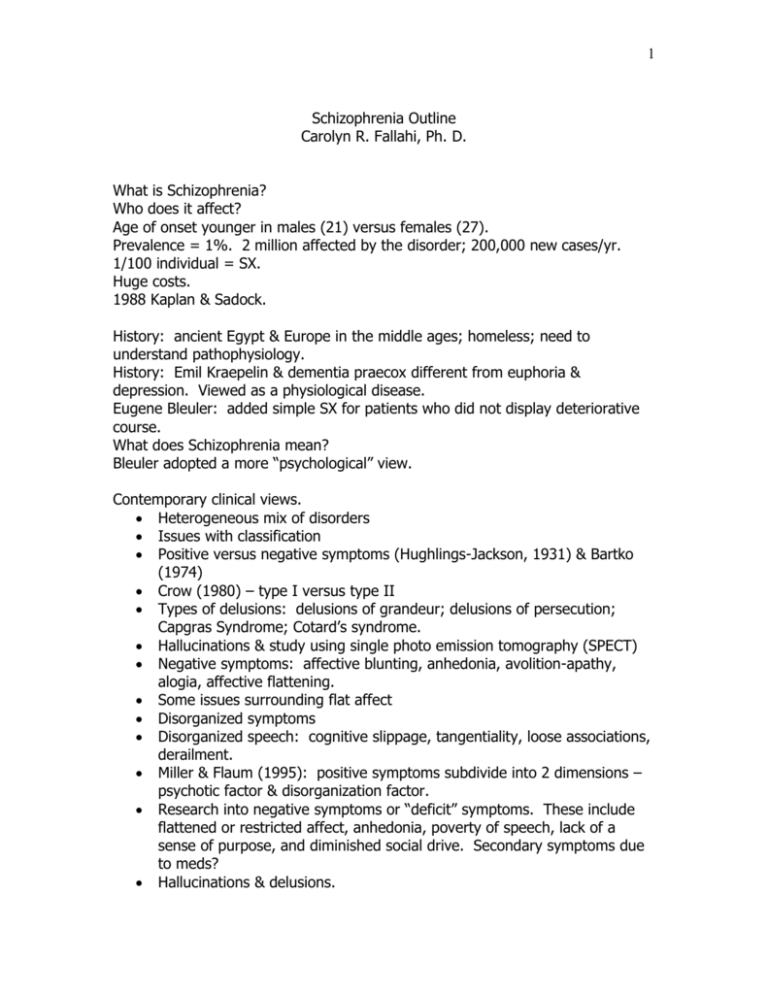
1 Schizophrenia Outline Carolyn R. Fallahi, Ph. D. What is Schizophrenia? Who does it affect? Age of onset younger in males (21) versus females (27). Prevalence = 1%. 2 million affected by the disorder; 200,000 new cases/yr. 1/100 individual = SX. Huge costs. 1988 Kaplan & Sadock. History: ancient Egypt & Europe in the middle ages; homeless; need to understand pathophysiology. History: Emil Kraepelin & dementia praecox different from euphoria & depression. Viewed as a physiological disease. Eugene Bleuler: added simple SX for patients who did not display deteriorative course. What does Schizophrenia mean? Bleuler adopted a more “psychological” view. Contemporary clinical views. Heterogeneous mix of disorders Issues with classification Positive versus negative symptoms (Hughlings-Jackson, 1931) & Bartko (1974) Crow (1980) – type I versus type II Types of delusions: delusions of grandeur; delusions of persecution; Capgras Syndrome; Cotard’s syndrome. Hallucinations & study using single photo emission tomography (SPECT) Negative symptoms: affective blunting, anhedonia, avolition-apathy, alogia, affective flattening. Some issues surrounding flat affect Disorganized symptoms Disorganized speech: cognitive slippage, tangentiality, loose associations, derailment. Miller & Flaum (1995): positive symptoms subdivide into 2 dimensions – psychotic factor & disorganization factor. Research into negative symptoms or “deficit” symptoms. These include flattened or restricted affect, anhedonia, poverty of speech, lack of a sense of purpose, and diminished social drive. Secondary symptoms due to meds? Hallucinations & delusions. 2 Types of delusions: persecutory, grandiose, somatic. Type I versus Type II symptoms. Schizophrenia subtypes: paranoid type; catatonic type (echolalia, echopraxia); disorganized type (hebephrenia); undifferentiated type; residual type. Schizophreniform disorder. Schizoaffective disorder. Delusional disorder: the erotomanic type; grandiose type; persecutory type; somatic type. Brief psychotic disorder. Shared psychotic disorder (folie a deux). Schizotypal P. D. Etiology of Schizophrenia: a disease of the brain. History: the psychoanalytic tradition, e.g. schizophrenogenic mother (Fromm-Reichmann, 1948). Prenatal environmental risk factors: viral infection. Mednick & Colleagues (1988) Studies of starvation using the Dutch Hunger Winter between Oct 1944 & May 1945. Genetic Factors: “trigger”; diathesis-stress theory of illness. Family Studies: 40 family studies between 1920 & 1987. Risk for the general population = 1%; risk for spouses 2%; second degree relatives 2 to 6%; first degree relatives 9 to 40%; MZ twins 50%. But….risk for MZ rate is below 100% which means….. The issue of schizotypal & paranoid P.D. Twin Studies: Gottesman (1991) concordance rate of 48% for MZ twins & 17% for DZ twins. Adoption studies: Heston (1966) 10.4%. Model of transmission? Single gene model versus Multifactorial/polygenic model. Gottesman (1991) 6 criteria that distinguish polygenic from Mendelian illnesses. Linkage & association studies focus on chromosomes 6 and 11. Clinical neuropsychology or brain pathology. Neurochemical studies: DA hypothesis based on the effects of drugs that are either agonists or antagonists. Support for the DA hypothesis. Multiple subtypes of DA receptors, specifically D1 and D2. PET technology show elevated D2 receptor densities; but inconsistent finding. Ratio of DA receptor subtypes? DA and its link to attention and memory. 3 Neurological damage theories. Positive symptoms; negative symptoms; frontal lobes, e.g. hypofrontality & deficits that are in the dorsolateral prefrontal cortex of the frontal lobes. Psychological & social influences. Family interactions.
